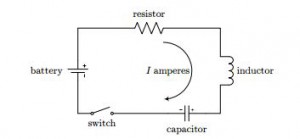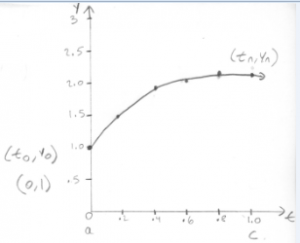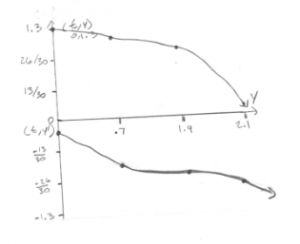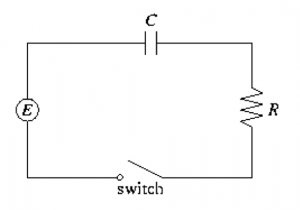Overview
What are Bernoulli Equations?
Well to put it simply Bernoulli Equations are first order differential equations. What sets Bernoulli Equations apart from other first order differential equations is that they are nonlinear first order differential equation. When we was first introduced to first order differential equations we learned that the standard form was :
y’ +p(t)y = g(t) , y(to) = yo
What separates Bernoulli Equations from other first order equations is that in standard form, it is not equal to some function that is linear but one that has an exact solution. What this means is that their is some power that is raised to the right side of the equation which we shall call n and n cannot be equal to 0 or 1. this is what makes Bernoulli Equations nonlinear. Now we can change the form of a standard first order linear equation into a nonlinear first order equation:
y’ +p(t)y = q(t)y^(n) y(to)=yo
The above equation is now the standard form for a Bernoulli equation. What we can now understand from this equation is that p(t) and q(t) are functions that are continuous. Since n is a real number that has to be n> 0 and n>1 for this to be non linear.
Now the question is how do we solve Bernoulli Equations?
Sample Problem:
take an equation such as t^(2)y’ + 2ty – y^(3) = 0
and change it by adding y^(3) on both sides and we get:
t^(2)y’ + 2ty = y^(3)
Next we divide by t^(2) to on both sides of the equation so we can get it into standard form.
y’ + 2/yt = y^(3)/t^(2) <————-STANDARD FORM
Now we can go into the steps to solve this equation;
1. Divide by y^(n)
y’/y^(3) + 2/yt/y^(3) = (y^(3)/t^(2))/y^(3)
we get: (y’ + 2/yt)/y^(3) = 1/t^(2)
2. We substitute v = y^(1-n)
Since y^(3)
we get:v = y^(1-3) = y^(-2)
now we can rearrange the formula to so we can substitute v into it by moving the y^(2) to the numerator and we get:
y’/y^(3) + 2y^(-2)/t = 1/t^(2)
y’/y^(3) + 2v/t = 1/t^(2) <——————-Substitute v for y^(2)
Before we move to the solve Step we need to take the Derivative of the substitution v = y^(-2)
d/dy y^(-2)
dv/dt = -2y^(-3) dy/dt
(-1/2)v’ = -2y’/y^(3)(-1/2)
Now we can substitute for y’/y^(3) with the above equations and we get:
(-1/2)v’ + (2/t)v = 1/t^(2) <—————– First order linear equation
next we use the method of intergrating factor which states
mu = e^ intergral of (-4/t) which is equal to 1/t^(4)
we then multiply both sides b\by Mu and get the equation:
(dv(t)/dt)/t^(4) + d/dt(1/t^(4))v = (-2/t^(6))
Next we intergrate both sides and we come to the final answer of
y(t) = +- Sqrt(5t)/sqrt(ct^(5) + 2)
Videos:
I \\








